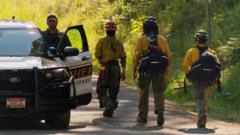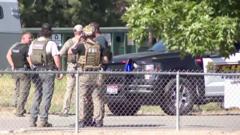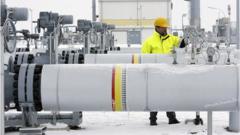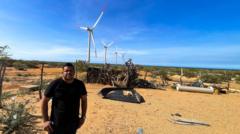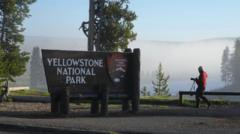Boise leverages geothermal resources, heating homes and institutions while reducing pollution impact.
**Boise’s Geothermal Revolution: Tapping into Nature’s Heat**

**Boise’s Geothermal Revolution: Tapping into Nature’s Heat**
Discover how Boise, Idaho, harnesses geothermal energy for sustainable heating solutions.
In the heart of Idaho, Boise stands out as a pioneer in sustainable energy, ingeniously tapping into the earth's natural heat to power its municipal heating system. Home to nearly 500 businesses and essential facilities—ranging from hospitals to government buildings—the city has implemented the largest municipally-run geothermal system in the United States. Notably, the Idaho Statehouse uniquely utilizes this geothermal energy, showcasing the city's innovative steps toward a greener future.
By drawing heat from aquifers situated deep within the ground, Boise's geothermal system capitalizes on fault lines that expose groundwater to hot rocks. This remarkable process heats the water to temperatures around 170 degrees Fahrenheit (or 77 degrees Celsius) which is then circulated through a network of closed-loop pipes. After traveling through buildings and heating various infrastructures, the water returns to the aquifer to be reheated, in a sustainable cycle that contributes to heating sidewalks during winter to melt snow and keep hot tubs warm.
This initiative exemplifies the potential local solutions can have on environmental challenges, reducing reliance on fossil fuels while promoting clean energy. As Boise continues to embrace its geothermal offerings, it exemplifies a successful model that other regions facing similar environmental dilemmas can emulate, setting the stage for broader discussions about community-driven ecological stewardship.
By drawing heat from aquifers situated deep within the ground, Boise's geothermal system capitalizes on fault lines that expose groundwater to hot rocks. This remarkable process heats the water to temperatures around 170 degrees Fahrenheit (or 77 degrees Celsius) which is then circulated through a network of closed-loop pipes. After traveling through buildings and heating various infrastructures, the water returns to the aquifer to be reheated, in a sustainable cycle that contributes to heating sidewalks during winter to melt snow and keep hot tubs warm.
This initiative exemplifies the potential local solutions can have on environmental challenges, reducing reliance on fossil fuels while promoting clean energy. As Boise continues to embrace its geothermal offerings, it exemplifies a successful model that other regions facing similar environmental dilemmas can emulate, setting the stage for broader discussions about community-driven ecological stewardship.




